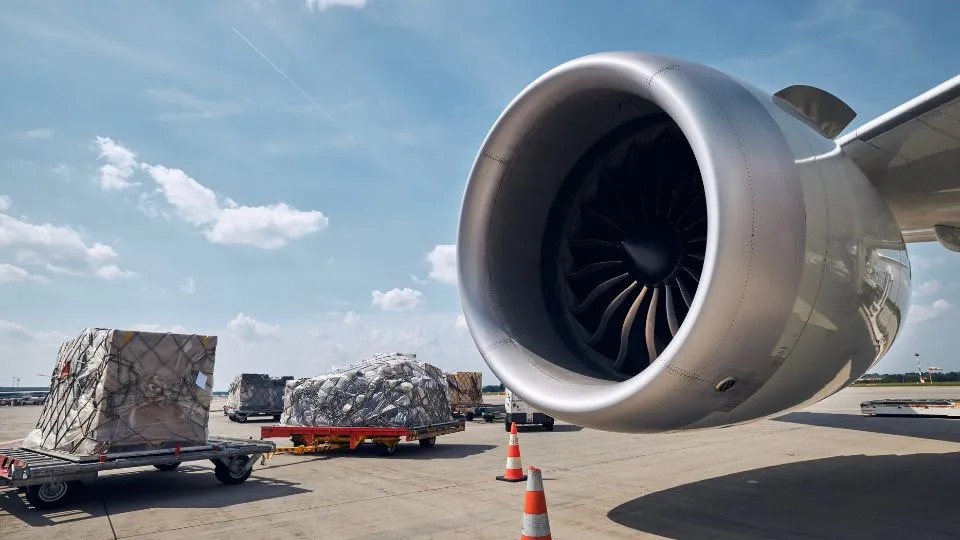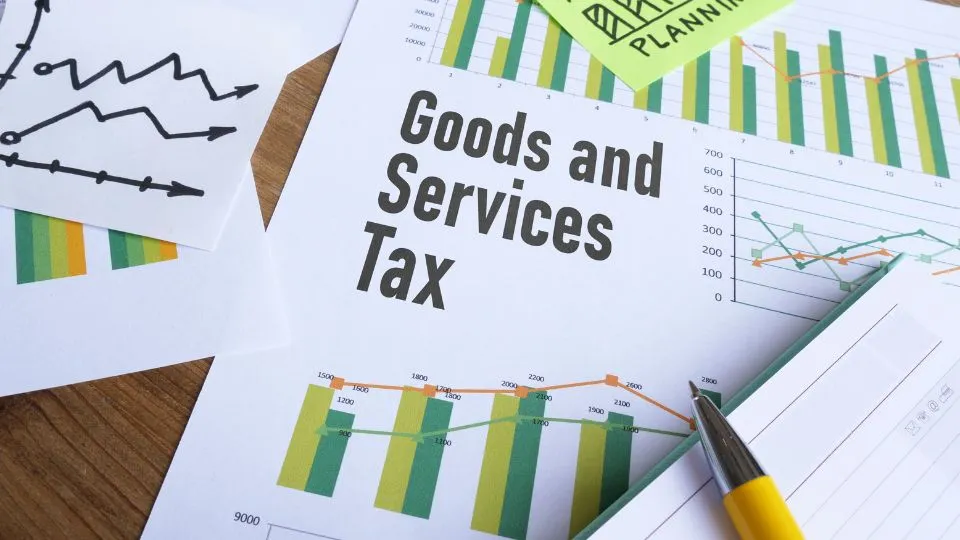Did you know air freight transports nearly $8 trillion worth of goods annually?
It accounts for almost one-third of global trade value. While ocean freight dominates by volume, air freight is the lifeline for speed and reliability in logistics.
Right from fast delivery of essential medical supplies to luxury fashion collections, it offers a critical supply chain for various product categories.
One of the most critical aspects of air freight is the concept of spot rates.
If you are looking for a cost-effective air freight solution while meeting timely deliveries, understanding air freight spot rates becomes even more crucial.
In this article, we’ll explore how air freight spot rates work, the factors influencing their calculation, and strategies to optimize your shipping costs.
We’ll also look into a real-world example of successful air freight management.
Let’s start by understanding air freight spot rates and how they impact your shipping decisions.
What are Air Freight Spot Rates?

Air freight spot rates are the current market prices for the immediate cargo movement by air.
Businesses prefer air freight spot rates to manage time-sensitive or one-time shipping needs.
These are usually determined based on current fuel costs, available cargo space, and seasonal demand.
Here’s what determines air freight spot rates:
- Fuel costs: Rates fluctuate with global fuel prices.
- Available cargo space: Limited space during peak seasons drives up prices.
- Seasonal demand: Higher demand often results in premium rates.
Market conditions also influence spot rates, particularly during peak seasons when the rising demand leads to premium freight prices.
Let’s examine when air freight can create a difference for your business.
When Should You Ship by Air?
Air freight is ideal when speed and reliability outweigh cost considerations. Here are key scenarios where air freight makes sense:
- For time-sensitive deliveries like seasonal products and promotional items that need quick transportation.
- For safe delivery of high-value items like electronics and luxury goods.
- Fresh seafood or flowers with limited shelf lime.
- To avoid stockouts with rapid restocking solutions.
- Quickly reach distant markets, such as shipping components from Asia to North America.
- Deliver life-saving medications or temperature-sensitive pharmaceuticals reliably.
Now let’s analyze how to calculate air freight costs accurately.
How to Calculate Air Freight Cost?

The true cost of air freight goes beyond its basic rate calculations.
It includes several factors such as the weight and volume of your shipment, the route, and additional charges.
Let’s break down each component to help you budget effectively.
1. Determine Chargeable Weight
Before setting a price, carriers first calculate your shipment’s chargeable weight. They compare actual and volumetric weights, charging based on the higher value.
To find the volumetric weight, use this formula:
| Volumetric Weight (kg) = Length (cm) × Width (cm) × Height (cm) / 6000 |
For example, your cargo is lightweight but takes up a lot of space. In this case, the airline sets the freight rate based on its volumetric weight instead of its actual weight.
2. Obtain the Base Freight Rate
Once the chargeable weight is determined, the next step is to check the base freight rate. It is the cost per kilogram for shipping on a specific route.
The rate depends on:
- Shipping route
- Carriers or airlines that offer different pricing structures
- The type of air freight service you selected. For instance, express shipping costs more than the standard delivery.
3. Add Surcharges
Air freight rates include more than the base rate. You also need to consider additional fees such as:
- Fuel surcharge or fee adjusted based on current fuel prices.
- Security surcharge covers mandatory screening and other cargo security measures.
- Documentation fees include the costs for processing relevant paperwork and customs documentation.
- Terminal Handling Charges (THC) are the cost of managing and processing cargo at the airport terminal. These charges are sometimes billed separately, depending on the agreed Incoterms between the parties involved.
4. Calculate the Total Air Freight Cost
Once you have all the details, you can calculate the total shipping cost using this formula:
| Total Air Freight Cost = (Chargeable Weight x Base rate) + Surcharges + Terminal Handling Charges |
Let’s understand the calculation through an example:
Your shipment has a chargeable weight of 100 kg and its base rate is $5 per kg. Additionally, the total surcharge is $200.
Based on the following details, the Total Air Freight cost would be (100 kg x $5) + $200 = $700.
Understanding these cost components allows you to optimize your shipping strategy and compare rates effectively.
Next, we’ll look into the pros and cons of air freight spot rates.
Pros and Cons of Using Air Freight Spot Rates

Air freight spot rates offer both unique advantages and challenges. They provide great flexibility and speed as compared to other modes of shipping.
On the other hand, shipping via air can be costly and sometimes unpredictable.
Here’s a breakdown of the pros and cons of using air freight spot rates:
| Pros | Cons |
| Air freight offers fast delivery for urgent or time-sensitive shipments like electronics, perishables, or seasonal products. | Higher costs than contract rates, especially during peak seasons. |
| You can ship goods without any long-term commitments or contracts. | Spot rates are unpredictable. |
| Flexible booking options. | Airlines offer limited space during peak seasons which can lead to shipment delays. |
| Spot rates are available when you have unexpected cargo or limited time to plan a shipment. | You must regularly monitor market trends to secure the best and most effective air spot rates. |
How to Monitor and Compare Air Freight Shipping

You can secure the best carrier and shipping deals by regularly monitoring air freight spot rates.
Here’s how you can do it:
1. Compare Quotes with Smart Tools
When handling an urgent shipment, save time by using online freight platforms like SeaRates ERP. Instead of searching multiple airlines manually, quickly compare real-time spot rates in one place.
Simply enter your cargo details, and the platform shows you pricing from multiple carriers and airlines.
This helps you find the best spot rate based on your shipment size, route, and delivery schedule.
2. Monitor Market Trends
Air freight rates constantly fluctuate due to fuel prices and airline capacity. You can stay ahead by tracking industry news and following air cargo reports.
By analyzing market trends, you can predict rate changes and book shipments at lower prices.
If you notice a rise in demand or capacity, adjust your shipping schedule to avoid peak season prices.
3. Understand and Plan around Seasonal Variations
Air freight rates often rise during peak seasons, holidays, and major sales events. Book shipments early during peak seasons to ensure on-time deliveries and secure lower freight rates.
During off-peak periods, take advantage of cheaper rates and minimize total shipping costs.
4. Evaluate Additional Fees and Surcharges
Remember, a lower base rate doesn’t always mean cheaper shipment. Some carriers add high surcharges which increases the total cost.
When comparing spot rates between carriers, always break down all surcharges, including fuel surcharges, terminal handling charges, and security fees.
5. Use Digital Tracking Tools
Instead of just guessing, use advanced freight tracking and data analytics tools.
Freight forwarding platforms provide real-time dashboards that monitor historical data and predict future rate fluctuations.
With this data, you can book shipments at the right time and at reasonable prices.
6. Build Strong Relationships with Carriers
Regularly shipping with the same airline gives you an advantage, while negotiating freight rates.
Carriers offer discounts, priority bookings, and better service to loyal customers.
By maintaining strong relationships with air freight carriers, you can secure better rates, even for spot-rate shipments.
Cost of Air Cargo from India to International Destinations
Air cargo rates from Indian hubs vary based on factors such as destination, cargo weight, airline capacity, types of goods, fuel prices, and seasonal demand.
The handling charge for shipping general air cargo from India ranges between 74 paise and INR 2.22 per kg while a special air freight can cost you between INR 1.47 and INR 6 per kg.
Air cargo rates also vary based on:
- The destination country and region. For example, the rate of shipping goods to the UAE or Singapore is usually less expensive than shipping to North America or Europe.
- Longer routes and less common destinations usually charge higher rates.
- Oversized or heavier cargo incurs higher freight costs.
- Rising fuel costs also lead to increased freight rates.
Fluctuating rates and complex pricing factors make it challenging for businesses to manage air freight operations. Modern logistics companies require technology that adapts to their unique needs, not just airline operations.
Platforms like SeaRates ERP address these challenges by offering a cost-effective and scalable solution. It combines rate optimization, and shipment tracking features, all in one platform.
Here are the key benefits it offers:
- Real-time spot rate comparison across multiple carriers, ensuring the best air freight deal.
- Enhanced visibility and transparent supply chain view with live tracking and automated shipment updates.
- Multimodal freight management to manage air, sea, and land freight shipments in one unified platform.
Conclusion
The air freight landscape continues to evolve rapidly, presenting several challenges and opportunities for businesses worldwide.
Understanding key factors such as rate management and operational efficiency, helps you make strategic decisions and improve operations.
Take the first step, no matter how small.
You can start by reviewing your shipping data from the past three months. Identify areas where you can improve efficiency or reduce costs.
By pinpointing inefficiencies, you can streamline your operations, and create a cost-effective process moving forward.
SeaRates ERP provides an ideal solution for optimizing these efforts. With its advanced digital tools, you can enhance shipment speed, lower costs, and enhance safety.
Discover how SeaRates can streamline your air cargo operations.
Leverage its advanced air booking capabilities to optimize your cargo capacity.


Frequently Asked Questions
1. What is the difference between air freight spot rates and contract rates?
| Factors | Air Freight Spot Rates | Air Freight Contract Rates |
| Definition | Spot rates are freight costs that fluctuate based on market conditions for individual shipments. | Contract rates are long-term rates negotiated for regular shipments or high volumes. |
| Price Stability | Vary frequently depending on factors like demand and capacity. | Remain stable over the contract period, offering predictable pricing. |
| Booking Frequency | Typically used for one-time or infrequent shipments. | Used for ongoing or repeat shipments with the same carrier. |
| Flexibility | Offer more flexibility as they allow booking based on current market rates. | Limited flexibility, as they are based on pre-negotiated terms and commitments. |
| Cost | Can be higher during peak seasons or periods of high demand. | Generally lower, as carriers offer discounts for volume or long-term agreements. |
| Ideal For | Urgent, time-sensitive, or smaller shipments. | Regular and predictable shipping needs or larger volumes. |
2. What are the benefits of air freight shipping?
Air freight offers several key benefits:
- Speed: It is the fastest mode of transportation and the ideal solution for time-sensitive shipments.
- Reliability: Air cargo ensures predictable and on-time deliveries.
- Security: Air freight is considered one of the most secure modes of transport, with strict cargo handling and security protocols.
- Global Reach: Air freight connects almost every major city globally, allowing international trade across continents.
- Lower Inventory Costs: Air freight ensures fast delivery of goods, reducing the need for large inventories. It also enhances cash flow and boosts supply chain efficiency.
3. What is the rate of air freight per kg?
The rate of air freight per kg varies significantly depending on factors like the route, seasonal variations, weight, and the type of goods.
On average, air freight rates typically range from $2.50 to $10.00 per kilogram.
For example:
- Air freight rates from India to UAE: $2.50–$4.00 per kg
- India to the USA: $6.50–$10.00 per kg
To get an accurate rate, it’s best to consult with freight forwarders or use online freight rate calculators for real-time quotes.
4. What goods are generally shipped via air freight?
Shippers use air freight to transport a wide variety of goods, such as:
- Perishable goods like fresh seafood, flowers, and medicines.
- High-value items such as electronics, luxury goods, and high-end fashion products.
- Urgent shipments such as automotive parts, spare parts, or electronics components are needed urgently for production.
- Dangerous goods that require special handling and faster transportation.
- Lightweight yet valuable goods.
5. What tools can help track air freight spot rates?
Several advanced tools can help you track and compare air freight spot rates:
- Freight Marketplaces and Platforms: Offer real-time comparisons of spot rates across multiple carriers.
- Air Cargo Rate Calculators: This allows you to calculate and compare air freight rates by inputting shipment details.
- Freight Forwarder Software: Many freight forwarder software like SeaRates ERP offer digital dashboards that track spot rates and provide analytics on market trends and price fluctuations.
- Carrier Websites: Major carriers provide rate calculators that give updated spot rates for specific routes and shipment weights.








